BLOG
30 kW Solar Systems

If you’re looking into powering your business with solar energy, you’ve probably noticed that commercial solar systems come in a wide range kiloWatt (kW) ratings. Like many potential solar investors, you may be unsure of what these ratings mean in practical terms.
Put simply, the kW rating refers to a solar system’s capacity for energy output in conditions of unobstructed sunlight. Bigger is not necessarily better, though – it comes down to the individual needs of your site, operations and finances.
While large-scale commercial solar systems of 100kW or more can be well-suited to businesses with very high energy usage, they often go far beyond what’s needed (and viable) for smaller businesses.
Systems sized at around the 30kW size are a popular choice for commercial sites with low to medium energy usage – with annual electricity costs of around $15,000.
SAVINGS AND ROI
If you’re looking at solar systems in the realm of 30kW, it pays to investigate how much energy these solar systems are able to produce and compare this to your power bills.
In doing this, it’s important to keep in mind that a solar system’s generating potential depends on a number of case-by-case variables.
For example, your site’s geographic location influences the amount of available sunlight, and this determines the generating potential of a solar system. Brisbane, for example, receives ample sunlight year-round, so solar systems up north will likely generate more energy.
Other factors to take into account include:
- Solar system quality
- Structural features, such as roof type, orientation and shading
- Obstructions to light
- Seasonal variables
That said, as a rough estimate, a 30kW solar system can generate energy of value equivalent to $10,000 to $20,000 per annum. For businesses with annual electricity bills roughly around the $15,000 mark, a solar system of this size has the potential to dramatically reduce (if not eliminate) the need to buy energy from the grid, while not wasting capital on purchasing and maintaining a solar system that generates more power than you can use.
For businesses with electricity usage at around this level, full return on investment for a 30kW system is generally achievable in under 5 years, with these systems costing between $32 000 and $55 000 on average.
Spatial Factors
While cost is key when thinking about installing a commercial solar system, spatial considerations are a further deciding factor.
While it’s clear that solar systems with higher capacities can generate more energy and have a higher ROI, many small to mid-sized commercial sites simply don’t have the roof space or layout to support a large scale solar system.
A 30kW solar system can often be suited to such cases, offering significant power bill cuts and emissions reductions within the scope of a smaller rooftop.
Typically, a solar system of this capacity will require around 120-140 panels, depending on the make of panels and the tilt of the roof. This means you’ll need suitable roof space with dimensions somewhere in the ballpark of 150-200m2.
Our commercial solar panel calculator is an easy way to get an overview of how many panels your site’s roof can accommodate.
From there, a Cherry Energy Solutions expert can assist you exploring the possible extent of the savings that solar can provide for your business.
Case Study
IBIS Hotels’ Redcliffe branch sought a solution to reduce operating costs and enhance sustainability credentials. With round-the-clock operating hours, the site’s energy consumption was high.
Cherry Energy Solutions installed a 29.15kW solar system. Composed of 110 x 265kW solar panels, it will generate an estimated 46 000 kWh of energy annually, which translates to a saving of $13,850 per year. In addition, the business will reduce their carbon footprint by 40,000 kg CO2 per annum.
This strong reduction in energy costs means IBIS Redcliffe can expect to see a rapid return on their investment, plus protection from rising and volatile electricity prices as well as committing to a more sustainable future.
See more on this project here.
Ready to find the right fit?
For small to medium businesses investing in commercial solar, it’s essential to choose the right solar system size for a balance of maximum power bill cuts and optimal cash flow.
To explore whether a 30kW solar system is the right choice for your business, book a consultation with the experts at Cherry Energy Solutions today.
LATEST ARTICLES
OUR BLOG
BLOG
100KW SOLAR SYSTEMS
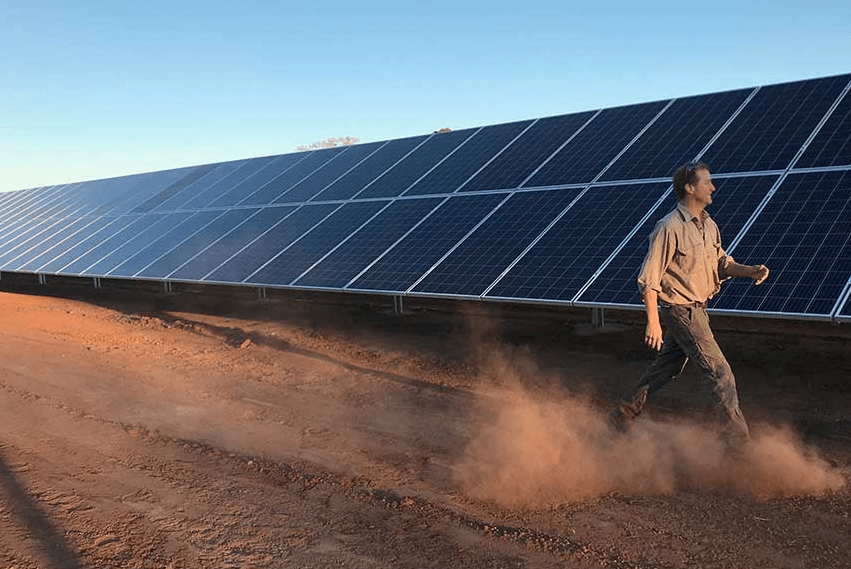
If you’ve been looking into investing in commercial solar, you may have noticed that systems on the market come in a range of kiloWatt (kW) ratings, with 100kW (99.9kW) being a popular size for commercial systems in Australia. It’s worth considering what these ratings mean for your business.
In short, a system’s kW rating indicates its capacity for energy output under ideal conditions of unimpeded sunlight. It is determined based on the number and size of the photovoltaic panels used in the given system.
LOGISTICAL FACTORS
How much power does a 100kW solar system produce?
As a rough estimate, you can expect to generate between 350 and 450 kWh per day, or 130,000 to 160,000 kWh per annum. For a business with high electricity usage with an annual power bill of around $50k, this can translate to taking around 30% off the business’ total power bill.*
However, this depends on a number of variables, including local and seasonal climate conditions, system quality and obstructions to light. It’s important to know that the 100kW designation does not account for these variables.
System Size & Panels
When deciding whether to install a 100kW solar system, size is an important factor to consider: do you have enough space, and can your roof structure support the system weight? Typically, a system of this capacity will require around 400 panels, each measuring around 1.6 x 1 metre. This means you’ll need somewhere in the ballpark of 640 square metres of suitable mounting space.
Government Incentives for 100 kW Systems
Within the Australian federal government’s current incentive schemes under the Renewable Energy Target, 100kW is the cutoff rating that divides small-scale from large-scale solar projects like bikes and cars. 99.9kW systems are the largest that can be classed within the small-scale stream.
Systems rated 100kW or more fall into the large-scale stream, which is designed to incentivise the development of renewable energy power stations (e.g. solar farms).
Therefore, if your commercial operation is in the market for a solar system in the realm of 100kW, it’s worth considering which side of that figure you should lean to.
100 Kw: Small Scale Certificates (STCs)
Both streams enable the generation of currency units within a certificate scheme. Small-scale certificates are generated upfront as a one-off incentive, and generally redeemed from the government by a supplier such as Cherry Energy. This supplier then passes the certificate value onto the buyer (you) in the form of a discount at the time of purchase.
+100 Kw: Large Scale Generation Certificates (LGCs)
Large-scale generation certificates, on the other hand, are generated on an ongoing basis, according to the amount of eligible energy produced by the system (which is considered a power station). They can thus serve as an ongoing revenue source; however, there is no upfront discount.
The best choice for your business will depend on your commercial framework and what you aim to achieve. However, it’s worth noting that a 99.9kW system is the largest on which you can receive an upfront discount based on these federal government incentives.
SOLAR POWER POTENTIAL BY REGION
The amount of power that can be generated by a 100kW system depends in part on its geographic location. This is due to the differing amounts of sunlight available in different parts of the country.
This is something to take into account when considering moving your operation to commercial solar power. Brisbane, for example, receives ample sunlight year-round. This means that systems placed in this part of the country can generate more power than those in, say, Melbourne or Sydney.
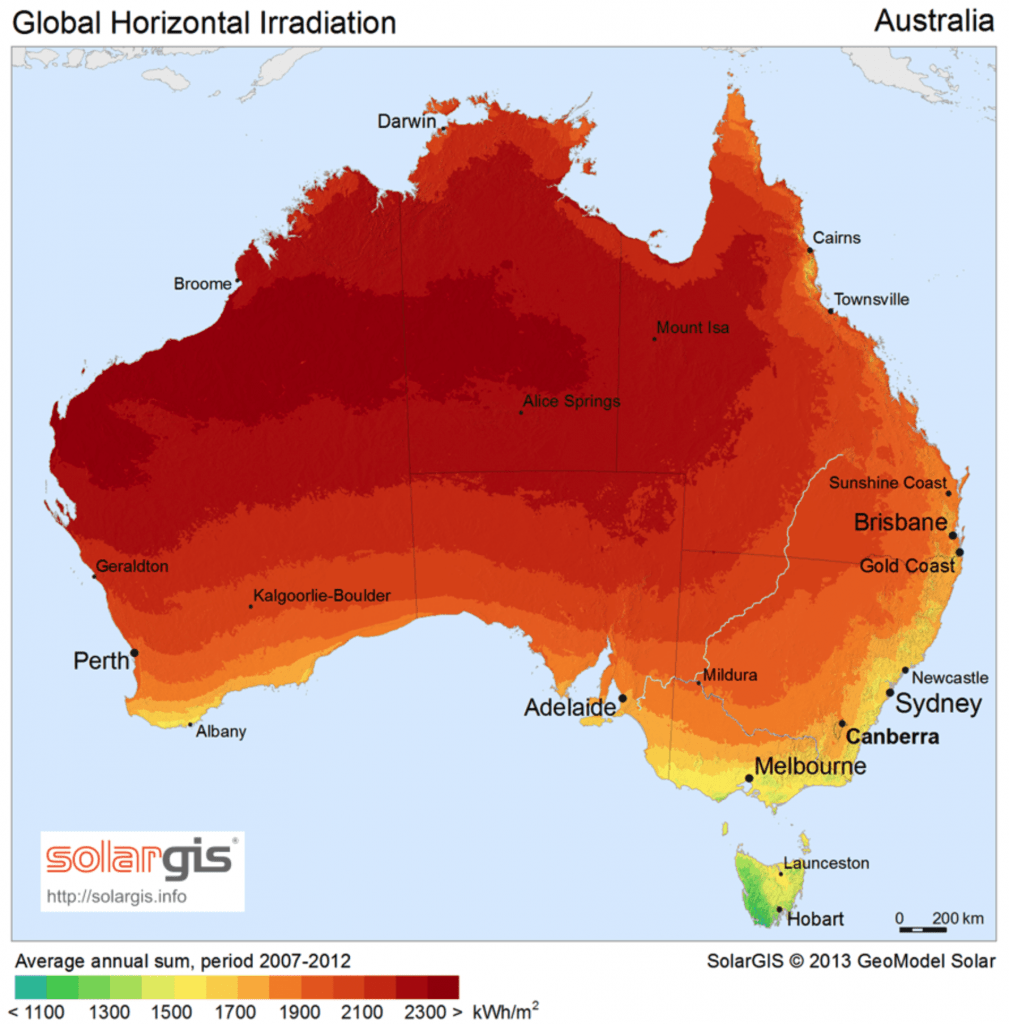
JUST UNDER 100 KW SOLAR SYSTEM PROJECT (CASE STUDY)
Timber and truss manufacturer Peuker & Alexander sought a solution to save on the massive energy usage at their Campbellfield industrial space. Cherry Energy installed a premium 99kW solar system, comprising 384 x 260W panels with 25kW inverters.
This scale of system is capable of generating over 118,000 kWh per annum, translating to an average value of nearly $21,000 annually. This solution was combined with other methods of reducing power consumption, such as retrofitting light fittings with energy-efficient LEDs, to more than double that value.
The solar system chosen, with its rating falling within the 99.9kW or less range, fell into the small-scale stream of government incentives. This made Peuker & Alexander eligible for 1,700 Small-Scale Technology Certificates, equivalent to a $65,000 discount on system installation costs.
READY TO SIZE UP THE OPTIONS?
When investing in commercial solar, it pays to maximise your savings by choosing the right system size for your space and energy needs. Begin the process by consulting with the efficiency experts at Cherry Energy today.
LATEST ARTICLES
OUR BLOG
News & Information
A guide to the energy storage revolution
A true revolution for the renewable energy sector is the development of battery storage systems. The major downside of solar energy was certainly its constriction to daylight hours. However, technological advances are launching us into a new era of energy efficiency and sustainability. As the landscape changes dramatically, there is more than ever a need for information and transparency within the industry.
On 16 June, President Obama hosted a summit at the White House to address the potential of emerging battery storage technologies, announcing a number of policies to assist the US’ broader environmental policy. An extremely positive sign of things to come for the global energy storage market and an encouraging sign for Australia.
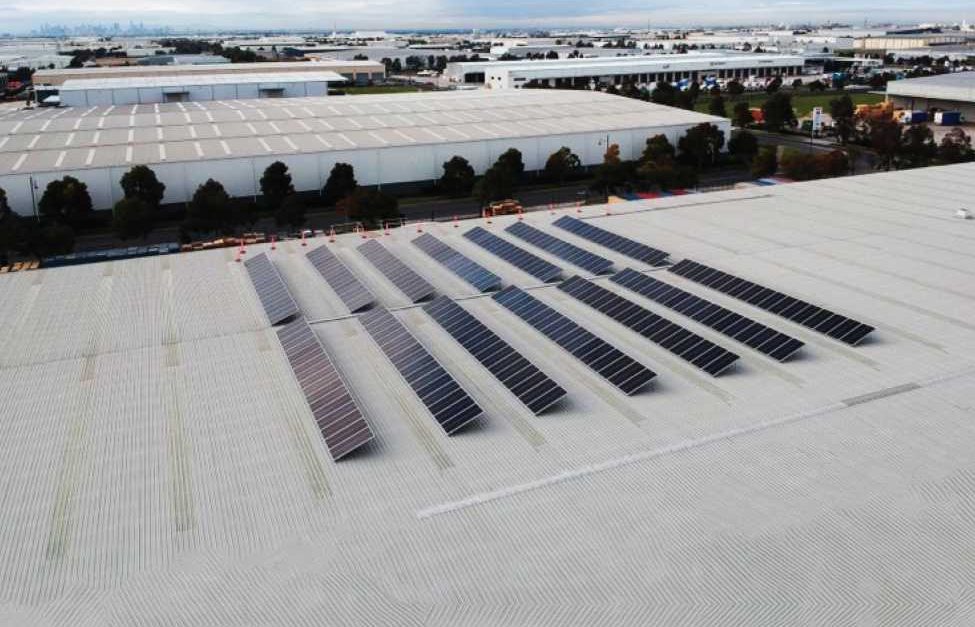
The most common types of batteries.
Alkaline, lead-acid and lithium-ion batteries are the most commonly used. Single-use batteries such as the alkaline AA or AAA power small electrical devices. Electric cards and grid energy storage, however, use rechargeable batteries such as lead-acid and lithium-ion. Lead-acid batteries are relatively cheap but typically last only a few years and aren’t powerful enough to power a car and they have toxic elements that require special handling after use.
The rise of lithium-ion batteries
Lithium-ion batteries pack more energy into a given volume, last longer and operate at a wider range of temperatures than other rechargeable batteries.
As a result, they have become the standard batteries for running computers, mobile phones and other consumer electronics. And, most importantly, they also have the energy density and longevity that make them suitable for powering cars and storing and dispatching solar electricity.
It’s no longer a matter of speculation as to whether lithium-ion batteries will be product of choice for storing large amounts of energy for at least the next 10 years.
What do lithium-ion batteries cost?
Battery prices have fallen significantly since hitting the market in the 90s. Five years ago, a lithium-ion battery would fetch over $1,000/kWh in wholesale prices, but now the average price hovers around $400/kWh, with Tesla’s large scale commercial batteries as low as $250/kWh ($500/kWh including the software and system to operate them). By 2020, Tesla expects the total system price to be as low as $300/kWh.
Are lithium-ion batteries as good as they get?
As with all new technologies, there is room for growth and batteries have by no means reached the same plateau in innovation that solar PV has. However, by all accounts, the technology is expected to remain at a similar stage for the next five to ten years. This is exciting news. In conjunction with the market becoming more competitive and prices dropping significantly, now is the time to invest in the technology.
Where next for battery technology?
Flow batteries are the only serious contenders to compete with lithium-ion batteries. They store electricity in two tanks of liquid, separated by a membrane. However, they are much bulkier and often contain toxic, non-organic materials such as vanadium, iron, zinc and bromine.
Sources
Tesla’s Powerwall to flow batteries: a guide to the energy storage revolution
News & Information
A guide to the energy storage revolution
A true revolution for the renewable energy sector is the development of battery storage systems. The major downside of solar energy was certainly its constriction to daylight hours. However, technological advances are launching us into a new era of energy efficiency and sustainability. As the landscape changes dramatically, there is more than ever a need for information and transparency within the industry.
On 16 June, President Obama hosted a summit at the White House to address the potential of emerging battery storage technologies, announcing a number of policies to assist the US’ broader environmental policy. An extremely positive sign of things to come for the global energy storage market and an encouraging sign for Australia.

The most common types of batteries.
Alkaline, lead-acid and lithium-ion batteries are the most commonly used. Single-use batteries such as the alkaline AA or AAA power small electrical devices. Electric cards and grid energy storage, however, use rechargeable batteries such as lead-acid and lithium-ion. Lead-acid batteries are relatively cheap but typically last only a few years and aren’t powerful enough to power a car and they have toxic elements that require special handling after use.
News & Information
A guide to the energy storage revolution
A true revolution for the renewable energy sector is the development of battery storage systems. The major downside of solar energy was certainly its constriction to daylight hours. However, technological advances are launching us into a new era of energy efficiency and sustainability. As the landscape changes dramatically, there is more than ever a need for information and transparency within the industry.
On 16 June, President Obama hosted a summit at the White House to address the potential of emerging battery storage technologies, announcing a number of policies to assist the US’ broader environmental policy. An extremely positive sign of things to come for the global energy storage market and an encouraging sign for Australia.

The most common types of batteries.
Alkaline, lead-acid and lithium-ion batteries are the most commonly used. Single-use batteries such as the alkaline AA or AAA power small electrical devices. Electric cards and grid energy storage, however, use rechargeable batteries such as lead-acid and lithium-ion. Lead-acid batteries are relatively cheap but typically last only a few years and aren’t powerful enough to power a car and they have toxic elements that require special handling after use.
News & Information
A guide to the energy storage revolution
A true revolution for the renewable energy sector is the development of battery storage systems. The major downside of solar energy was certainly its constriction to daylight hours. However, technological advances are launching us into a new era of energy efficiency and sustainability. As the landscape changes dramatically, there is more than ever a need for information and transparency within the industry.
On 16 June, President Obama hosted a summit at the White House to address the potential of emerging battery storage technologies, announcing a number of policies to assist the US’ broader environmental policy. An extremely positive sign of things to come for the global energy storage market and an encouraging sign for Australia.

The most common types of batteries.
Alkaline, lead-acid and lithium-ion batteries are the most commonly used. Single-use batteries such as the alkaline AA or AAA power small electrical devices. Electric cards and grid energy storage, however, use rechargeable batteries such as lead-acid and lithium-ion. Lead-acid batteries are relatively cheap but typically last only a few years and aren’t powerful enough to power a car and they have toxic elements that require special handling after use.
The rise of lithium-ion batteries
Lithium-ion batteries pack more energy into a given volume, last longer and operate at a wider range of temperatures than other rechargeable batteries.
As a result, they have become the standard batteries for running computers, mobile phones and other consumer electronics. And, most importantly, they also have the energy density and longevity that make them suitable for powering cars and storing and dispatching solar electricity.
It’s no longer a matter of speculation as to whether lithium-ion batteries will be product of choice for storing large amounts of energy for at least the next 10 years.
What do lithium-ion batteries cost?
Battery prices have fallen significantly since hitting the market in the 90s. Five years ago, a lithium-ion battery would fetch over $1,000/kWh in wholesale prices, but now the average price hovers around $400/kWh, with Tesla’s large scale commercial batteries as low as $250/kWh ($500/kWh including the software and system to operate them). By 2020, Tesla expects the total system price to be as low as $300/kWh.
Where next for battery technology?
Flow batteries are the only serious contenders to compete with lithium-ion batteries. They store electricity in two tanks of liquid, separated by a membrane. However, they are much bulkier and often contain toxic, non-organic materials such as vanadium, iron, zinc and bromine.
Sources
Tesla’s Powerwall to flow batteries: a guide to the energy storage revolution
Are lithium-ion batteries as good as they get?
As with all new technologies, there is room for growth and batteries have by no means reached the same plateau in innovation that solar PV has. However, by all accounts, the technology is expected to remain at a similar stage for the next five to ten years. This is exciting news. In conjunction with the market becoming more competitive and prices dropping significantly, now is the time to invest in the technology.
News & Information
A guide to the energy storage revolution
A true revolution for the renewable energy sector is the development of battery storage systems. The major downside of solar energy was certainly its constriction to daylight hours. However, technological advances are launching us into a new era of energy efficiency and sustainability. As the landscape changes dramatically, there is more than ever a need for information and transparency within the industry.
On 16 June, President Obama hosted a summit at the White House to address the potential of emerging battery storage technologies, announcing a number of policies to assist the US’ broader environmental policy. An extremely positive sign of things to come for the global energy storage market and an encouraging sign for Australia.

The most common types of batteries.
Alkaline, lead-acid and lithium-ion batteries are the most commonly used. Single-use batteries such as the alkaline AA or AAA power small electrical devices. Electric cards and grid energy storage, however, use rechargeable batteries such as lead-acid and lithium-ion. Lead-acid batteries are relatively cheap but typically last only a few years and aren’t powerful enough to power a car and they have toxic elements that require special handling after use.
BLOG
COMMERCIAL LED EXPLAINED
FAQs
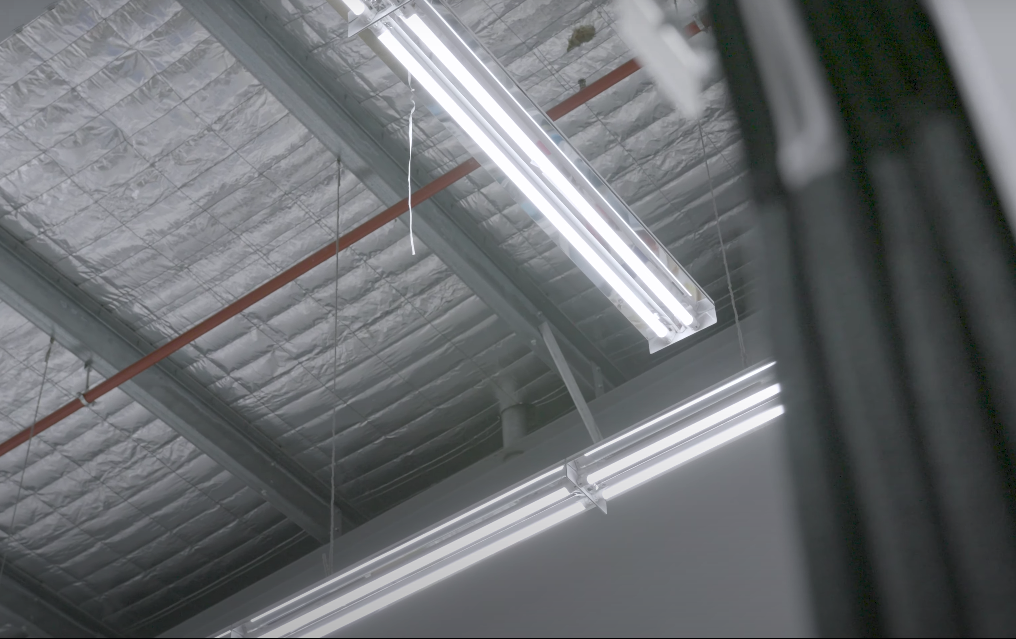
WHAT IS AN LED?
LED stands for light emitting diodes, and because it’s directional, it is a smarter, more efficient way to light a room. Rather than using fragile filament power that burns out easily, LEDs utilise the movement of electrons for power and light. LED bulbs stay relatively cool since they only utilise the diodes for light rather than relying on electricity such as to heat incandescent bulbs.
CAN LED’S BE USED TO REPLACE CONVENTIONAL LIGHT BULBS?
Yes, there is an LED replacement for the majority of incandescent, halogen and fluorescent light bulbs on the market. If your light fitting is not listed on the common types below please contact us for a solution.
WHAT TYPE OF LED LIGHT SHOULD I USE?
At first LED lights can be a little bit confusing, they are after all a brand new technology. We’ve done our best below to help you along the journey. If you still have questions please get in contact with us at [email protected], or 1300 570 886.
WHAT ARE THE MAJOR ADVANTAGES OF LED LIGHTS?
LED Lights:
Draw low power consumption – energy savings of up to 86% when replacing traditional lighting.
- Are long lasting – downlight fittings lasting 50,000 hours or more.
- Are cold lighting – radiant heat is typically less than 40 degrees Celsius, as such pose a significantly lower risk to cause ceiling fires than traditional lighting.
- Built tough – rugged and harder to break than traditional bulbs.
- Have fast switch times “ instant on, no time delay before lighting”
- Are simple to use.
- Are better for our environment – reducing our carbon footprint
HOW LONG WILL LEDS LAST?
Cherry LED Downlights have ratings of 50,000 hours usage – that’s compared to a typical incandescent lifetime of 3000 hours… much less time climbing ladders to change burnt out or flickering globes, and some great cost savings straight back into your pocket.
DO I NEED TO CHANGE MY WIRING FOR LED LIGHTS?
LED lights are an advanced technology lighting product. Whilst they are often compatible with ‘iron core’ or ‘electronic transformers’ already in ceilings, compatibility problems can exist between the different generations of technology. What’s more, old style transformers may reduce the lifetime of your globes (or fail themselves before the LED globe has reached the end of its useful life).Our advice? Use an accredited electrician to assess whether your transformers need replacing. Rest assured, at cherryLED we provide a fully installed service to ensure the switching process is as smooth as possible – our experts will quickly indentify the most efficient and effective solution for your home.
ARE LED LIGHTS DIMMABLE?
As LED’s are powered electronically, the dimming function of the globes is more versatile. For those who prefer dimmable globes, there are a range of LED lights that are compatible with dimmers. Where a dimmer is not compatible, our team of highly trained electricians can quickly and cost effectively tailor a solution for you whether you are in Melbourne or Sydney.No dimmers at your place? Not a worry, we sell a range of non-dimmable LED globes also.
WHAT COLOURS ARE AVAILABLE?
Although most lamps emit ‘white’ light, this can vary from a cosy ‘very warm’ white to a ‘cool’ white according to the colour temperature of the lamp and the needs of the environment in which they are operating.Some common colours include: 3400K (Kelvin): Typically the most popular colour our customer’s prefer. A slightly brighter, ‘warmer’ yellow light. 4500K: A more neutral ‘daylight’ colour, more commonly used in office buildings. 5400K: A white light, popular for commercial applications.
HOW DO I CALCULATE THE COST OF RUNNING A LIGHT BULB?
For the simplest solution, use our LED calculator.To calculate this yourself:Bulb wattage (i.e. 50W) multiplied by hours usage (i.e. 5) divided by 1000, i.e. $0.25 per day to operate.
CAN I TRUST LED LIGHTS?
All cherryLED globes are certified to Australian, CE and RoHS standards, are mercury free and come with a minimum 2 year guarantee. Even better, the MFB (Melbourne Fire Brigade) has rigorously tested our range of products to ensure they are safe for your home or office.Beware all lights are not necessarily created equal – we recommend lights only that meet the appropriate JAS-ANZ standards. If you’re not sure, please contact us on 1300 570 886.
WILL THE LED LIGHTS BE BRIGHT ENOUGH?
Whilst LED lights (as with all technology) had some major challenges early in their lifecycle, the new generation of lights produce an excellent level of output. We’re confident you won’t only finds globes to meet your needs, but will be pleasantly surprised with the results.
WHAT IS A CFL AND WHY WOULD I SWAP IT OVER TO LED?
CFL stands for compact fluorescent lamp. It is a small fluorescent light bulb that uses less energy than traditional incandescent light bulbs. However, LED’s:
- Last up to 6 times longer than CFL’s.
- Require no ‘warm up’ period when switched on.
- Are mercury free, AND.
- Typically offer a further 50% saving on energy usage to CFL’s.
DO CHERRYLED HAVE A WARRANTY POLICY?
Our globes have over 5 years of research behind them – we know they’re good and back them to perform. All our products come with a minimum 2 year warranty – and a no questions asked refund/exchange policy if our globes are found to be faulty.
IS THERE A FIRE RISK FOR LED LIGHTS?
LED lights run at much lower temperatures than incandescent and traditional halogen lights – gone are the days of burning your fingers touching a light fitting…. LED lights run at around the 50 degree Celsius mark, cool enough to touch!
LATEST ARTICLES
OUR BLOG
NEWS & INFORMATION
Extension of federal and state incentives
Multiple federal and state incentives were set to end but recent announcements have extended various incentives that will reduce costs of energy efficiency upgrades for eligible businesses.

INCENTIVES
- Great news for business around Australia, the federal government has extended the 100% instant asset write-off up to $150,000 to 31st Dec 2020! This means you still have time to upgrade your lights to LED and install a solar PV system and you may be able to instantly write these assets off*.
- The Victorian Energy Efficiency Upgrade (VEU) program that was suspended in April was reinstated last month. The good news is that commercial incandescent lighting upgrade incentives are available again.
- The South Australian Retailer Energy Efficiency Scheme (REES) will be replaced with a Retailer Energy Productivity Scheme (REPS) on 1st Jan 2021. REPS will provide incentives for activities that either improve energy efficiency and/or shift the time when energy is used.
- The federal government is providing $20k grants to dairy farmers wanting to reduce energy consumption as part of the Federal Energy Efficient Communities Program. Farmers looking to install solar could receive the grant to reduce the cost and carbon emissions and increase sustainability, cash flow and ROI.
On top of all these, there are more incentives and rebates available, meaning there are tens of thousands of dollars available right now for businesses to upgrade to LED lights or install solar and/or batteries. Instead of paying electricity companies for no ROI, invest in assets to improve cash flow and reduce carbon emissions.
SOLAR ENERGY
Solar Panels for Commercial and Office Buildings
If you’re thinking about investing in a commercial solar power system, cost factors will be among your primary considerations.
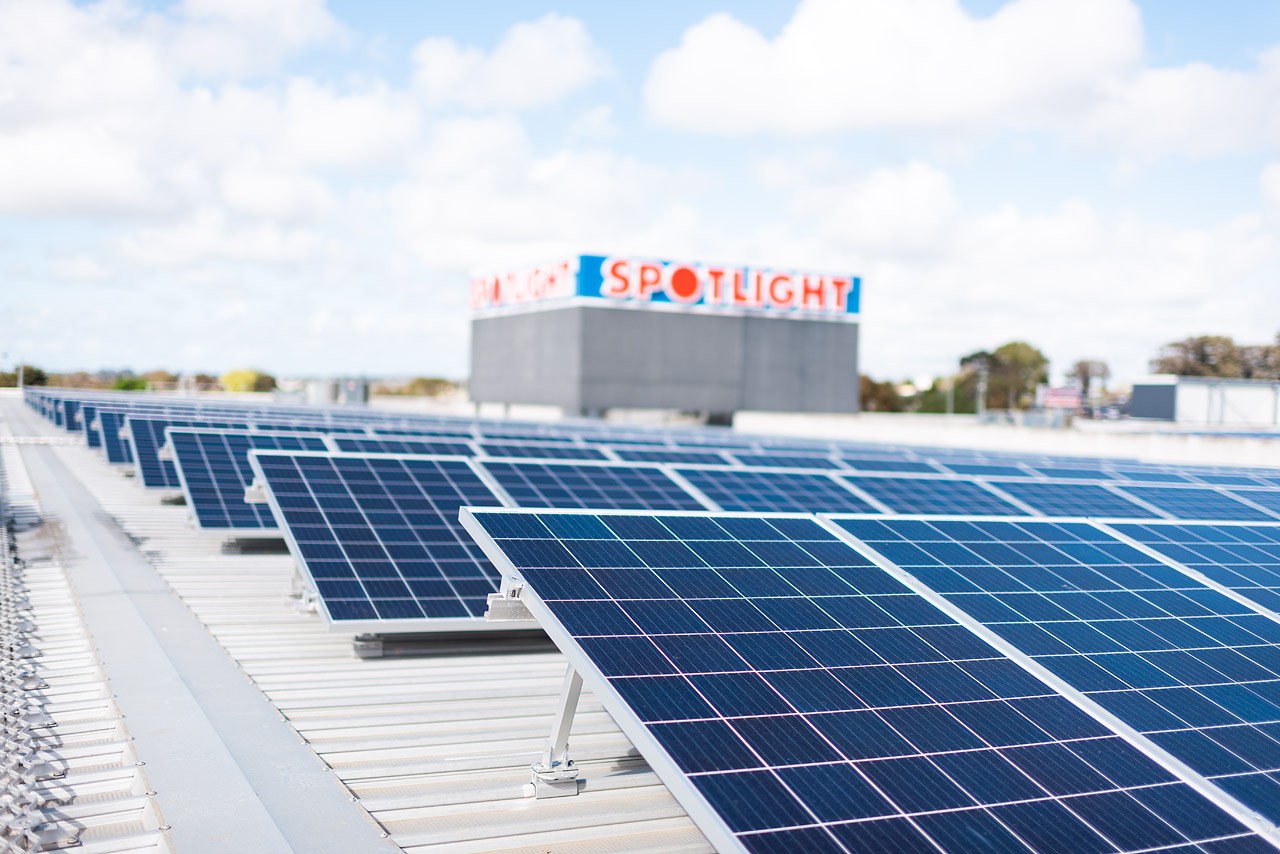
Choose the Right Solar System Size
Fortunately, many businesses find that taking this route sets them back no more than paying for electricity from the grid, with dramatically reduced exposure to fluctuating energy prices. Your office or government building, commercial site or school may be perfect for a solar energy solution bearing countless benefits.
When the right design decisions are made, offsetting a high proportion of your energy usage is an achievable goal.
With that in mind, here are a few key points to factor in for a cost-effective outcome – you may even end up with a positive cash-flow
By choosing a solar system size that’s appropriate for your building and the nature of your activities, you’ll be set up to meet your energy needs with optimal efficiency.
Small to Medium Size Business Solar Systems: 20 – 50 kW
These commercial solar systems are larger than residential arrays and are suited to the needs of small/medium businesses such as office buildings, retailers, primary schools, childcare, kindergartens, clubs, hospitality and leisure venues and other establishments with energy demands of 150kWh plus per day. 20kW solar systems generate around 72kWh on average.
Projects may qualify for Small Scale Technology Certificates under the STC Renewable Energy Scheme.
Commercial Grade Solar Systems: 50 – 100 kW
Depending on the size of the building and energy demands, larger multi-storey office buildings, secondary schools and other sites that use 350kWh plus would require commercial solar systems sized between 50-100kW for day to day operations.
Did you know that solar systems under 100kW could qualify for Small Scale Technology Certificates under the Federal Government STC Renewable Energy Scheme?
Additionally, there are many different funding options available for renewable energy projects including funding over a longer period of time where you pay nothing up front and are cash flow positive from the start with an Environmental Upgrade Agreements (EUA)* or, get a solar system installed with a Power Purchase Agreement (PPA), and only pay a reduced rate on your electricity for an agreed period then own it for $1!
*In New South Wales, Environmental Upgrade Agreements (EUA) are referred to as Building Upgrade Finance (BUF).
Larger Commercial Grade Solar Systems: 100 – 300 kW
Large commercial solar systems over 100kW may be eligible for Large-Scale Generation Certificates. Commercial solar systems over 100kW can support a vast range of high energy consuming business types typically indicative of the following industries:
-
- Large Commercial Offices
- Hotels
- Shopping Centres
- Warehouses and Industrial Spaces
- Transport and Logistics Sites
- Food Processing, Beverage and Manufacturing Facilities
- Storage Facilities
Industrial Grade Solar Systems: Over 300 kW
These industrial solar power systems are installed on large roofs of buildings and businesses with very high energy demands. These businesses include sizable factories, super complexes and plants.
Solar systems above 100kW can also be ground mounted and/or constructed as solar farms.
Opt for High Quality Panels
High quality PV panels are worth investing in – they have better longevity, reliability and efficiency than their cheaper counterparts, saving you money in the long term. Cherry Energy Solutions recommends panels from these manufacturers:
Ja Solar
A well-known market leader that you can trust boasting a 10% global market share, JA Solar panels are backed by 25-year linear power output warranty and 12-year product warranty.
Q Cells
Another industry-leading PV manufacturer, Hanwha Q CELLS solar panels are known for their stability, certified quality and high level of performance. Q CELLS products are also backed by an impressive 12-year product warranty and a 25 year performance warranty with 83% original rated power at 25 years.
Sunpower
SunPower solar panels incorporate cutting-edge technology, with cells designed to capture and convert more sunlight than conventional commercial cells. SunPower is a highly reputable brand for commercial applications boasting a market leading 25 year product quality AND performance warranty.
Add a Solar Storage System
All solar systems will generate varying amounts of power throughout the year – for example, summer may see more power generated due to increased sunlight.
By adding solar storage capabilities, you can store excess power generated by your solar system for use in the evening or early morning, dramatically reducing your reliance on the grid and further slashing your energy bills.
Cherry Energy Solutions is a Certified Installer of the Tesla Powerpack. These fully integrated, AC-connected commercial battery storage systems feature state-of-the-art technology, and can be scaled to your site’s energy needs, whether it be an office block or large-scale regional utility.
Monitor Energy Usage
Keeping track of energy usage is essential in getting the most from your commercial solar system.
With this in mind, Cherry Energy Solutions has developed Cherry Pulse, an intelligent energy monitoring system that allows you to keep tabs on how your business is consuming electricity in real time.
By enabling you to manage energy usage at a circuit and appliance level, using actual energy tariffs, it gives you the tools to stay in control of your business’ energy spend.
Weigh Up the Cost
When investing in solar panels for commercial buildings, cost can be a deciding factor in what level of energy offset can be achieved.
Ultimately, the cost will depend on the solar system size and type of panels you choose, together with the inclusion of add-ons such as storage and energy monitoring. The key thing to keep in mind is that these same factors will determine the capacity of your solar system to save you money in the long term.
The longevity, efficiency and overall performance of your solar system will reflect the quality of the installation, so it’s worth getting advice from a solar company experienced in commercial installations.
Look for a company that offers additional products, services and benefits such as a sustainability partner program and post installation packages to compliment your solar installation including performance reviews, monitoring, an emergency response team, longer installation warranties and proactive maintenance.
Cherry Energy Solutions is fully equipped to help transition your business to solar power, as well as advise on the range of financial incentives available from state and federal governments.
NEWS & INFORMATION
Why Energy Efficiency Matters
Energy efficiency is heralded as the solution to meeting increasing global energy demand and resource scarcity.
However on a global scale, energy efficiency has been met with a number of challenges.
The global energy community is now well positioned, with the lessons of over two decades of energy efficiency programs all over the world, to deliver new and successful programs in order to harness the possibilities of energy efficiency.
Here at Cherry, we proud to be part of the clean energy revolution in Australia and are a market leader in providing energy efficiency solutions.
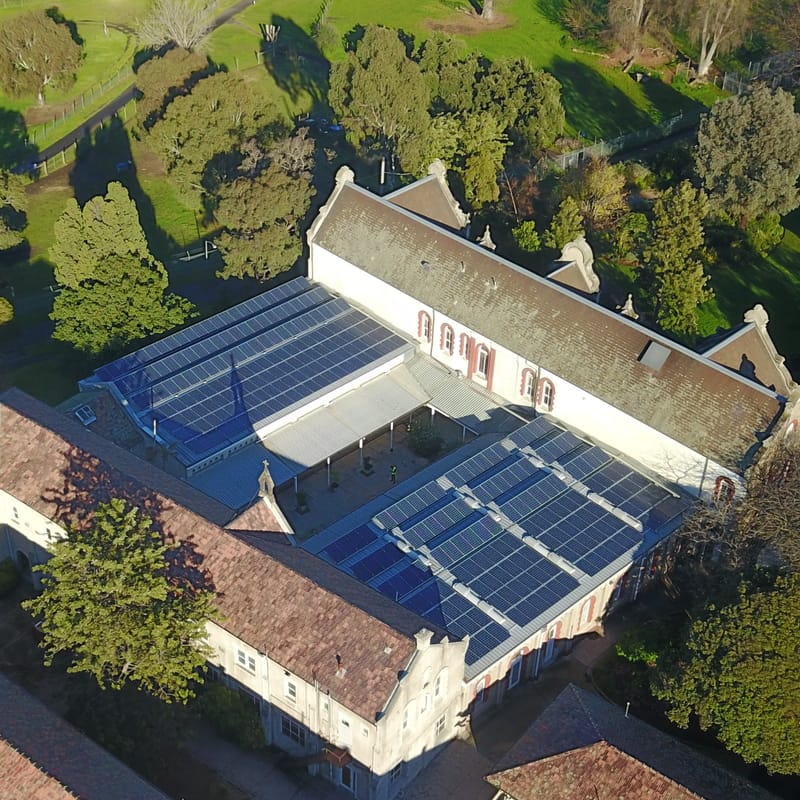
What problems are we facing?
Global energy demand continues to rise at an increasing pace. Investments in energy must similarly increase in order to meet the demand. This inevitably creates a plea for new, renewable technologies and solutions – and this is nothing new.
As demand grows, the burden on governments to support and incentivise energy efficient technologies and programs has become immense. Traditional solutions such as increasing taxes or implementing trading schemes serve only to exclude the poor and most vulnerable from the energy efficient space. Successful policies in developed countries must therefore be tailored and adapted to meet the distinct challenges faced by developing nations.
In Australia, we are fortunately positioned to be able to offer flagship examples of how to use energy efficiency most effectively.
How can energy efficiency help to meet the challenges?
Reducing waste and using energy as efficiently as possible facilitates a more effective allocation of resources, with the potential to boost economic output by US$18 trillion by 2035.
Improvements in energy efficiency are the most cost effective way to help increase competitiveness, generate employment, secure energy, reduce poverty and benefit development. By using otherwise wasted, inefficient resources more efficiently, we are able to pay for new developments while remaining cash flow positive.
McKinsey Global Institute ranked energy efficiency as the top priority among measures to mitigate climate change back in 2008, and it has only grown in influence and importance in the last 8 years.
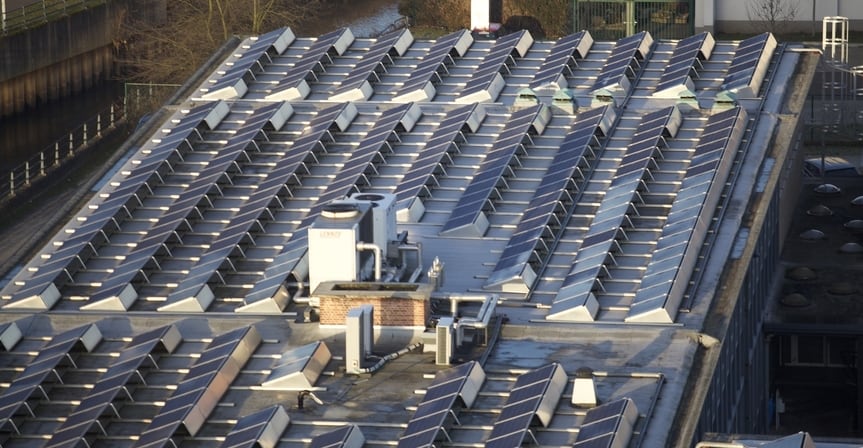
EXAMPLES
- Russia is the 3rd largest energy-consuming country, but is more energy-intensive than any of the top 10 energy-consuming countries. Through energy efficiency, it could eliminate almost 800 million tons of CO2 per annum – equal to the total energy consumption of France.
- China’s efforts to increase energy efficiency between 1980 and 2010 have resulted in a decline in energy intensity by 70%, equivalent to a reduction of 24.4 billion tons of CO2 emissions.
Why has the road to energy efficiency been so difficult?
With few negative externalities, generally high profits and cash flow positive solutions, it would seem that achieving energy efficiency would be straight forward. However, market failures and systemic barriers are preventing the realisation of energy efficiency’s potential.
- Poor market incentives and take up from governments to encourage investments in energy efficiency
- Low capacity of governments and agencies to influence changes in policies and deliver effective programs.
- Lack of convincing data and systemic evaluations of programs, costs and impacts.
- Absence of international consensus on the most effective policies and approaches for scaling up energy efficiency, the appropriate role of governments and how to change cultures and behaviours.
What we have learned
- Local, national and global policies must be accompanied by enforcement and implementation eg. China’s ‘acceptance codes’ at a building’s commissioning phase and clear rules and responsibilities for noncompliance
- National targets and reporting improve accountability
- Programs should be designed for implementation at scale
- More simple programs and business models are needed
- Incentives must drive markets
Incentives, incentives, incentives!
Incentive gaps related to energy efficiency are numerous. Victoria and New South Wales are great examples of using national schemes (EUAs, ESC and VEEC) to incentivise all players in the energy efficiency markets.
There needs to be a careful resolution of misaligned incentives. Utility companies fear decreases in sales due to increases in efficiency, landlords own buildings but tenants pay energy bills so neither party has a sufficient incentives to invest in energy efficiency. Australia is leading the way with their Environmental Upgrade Agreement (EUA) financing options in an attempt to incentivise all involved parties.
Markets respond most positively to the alignment of incentives.
moving forward
The resounding messages from the past two decades are of the importance to deliver energy efficiency initiatives at scale, to engage the private sector as early as possible and then follow with the public sector, and to plan ahead with the support of expansive research and monitoring of receptivity.
At Cherry, we will continue to make our products and services as accessible as possible to all Australians to facilitate our local and national government programs in order educate the local community on the benefits of energy efficiency.
Q Cells Solar Panels Review Leading the Way in Solar Technology
Cherry is proud to be supplying Hanwha Q-Cells solar panels. Q-Cells have consistently raised the bar in terms of solar energy research and is now the world’s largest solar cell manufacturer.
Offering market leading 12-year product warranty and 25-year performance warranty, Q-Cell solar panels are built to last and are guaranteed to stand the test of time. Perfect for commercial solar energy systems.
- Higher yield per surface area and lower BOS costs and higher power classes.
- Optimal yields, whatever the weather, with excellent low-light and temperature behaviour.
- Long-term yield security with Anti PID Technology, Hot-Spot Protect and Traceable Quality Tra.Q.
- High-tech aluminium alloy frame, certified for high snow and wind loads.

Here they are in action on the roof at Advance Chemicals in Altona!
